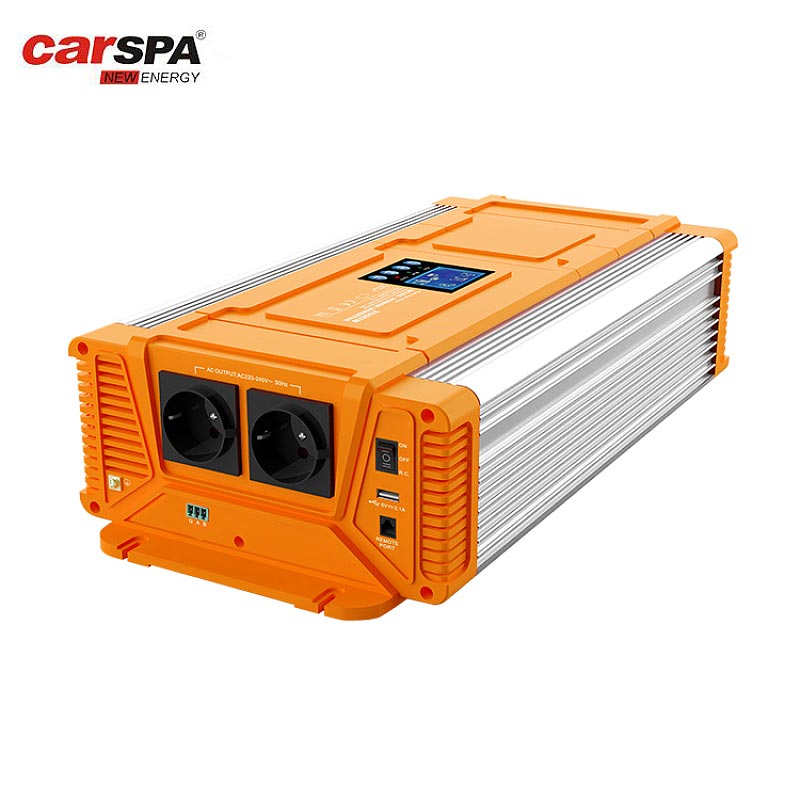How Long Will a 24 Volt Battery Last with a 1000 Watt Power Inverter
When planning to use a power inverter, especially one rated at 1000 watts, with a 24-volt battery, understanding the runtime is crucial. This knowledge helps in optimizing battery usage and ensuring that your power needs are met without interruption. In this article, we will explore how to calculate the duration a 24-volt battery can last when paired with a 1000 watt power inverter. We will break down the factors affecting battery life, the mathematical calculations involved, and provide practical tips for maximizing battery performance.
Understanding the Basics
Power Inverters and Their Function
Power inverters are devices that convert direct current (DC) from batteries into alternating current (AC), which is the standard electrical current used in most household appliances. A 1000-watt power inverter means it can provide up to 1000 watts of AC power to connected devices. This power is drawn from the battery, which stores energy in DC form.
Battery Capacity and Voltage
Battery capacity is typically measured in ampere-hours (Ah), indicating how much current a battery can supply over a specific period. For instance, a 24-volt battery with a capacity of 100 Ah can theoretically provide 100 amps for one hour or 10 amps for 10 hours. Voltage, on the other hand, indicates the electrical potential. In this case, we are dealing with a 24-volt battery, which is more efficient for higher power inverters compared to a 12-volt battery because it can deliver the same power with less current.
Calculating Battery Runtime
Basic Formula and Considerations
To determine how long a 24-volt battery will last with a 1000-watt power inverter, we need to perform some calculations. The key factors to consider include the inverter’s efficiency, the battery’s capacity, and the actual power draw of the connected devices.
The basic formula to estimate battery runtime is:
Runtime (hours)=Battery Capacity (Ah)×Battery Voltage (V)/Power Draw (W)×Inverter Efficiency
Example Calculation
Let’s assume we have a 24-volt battery with a capacity of 100 Ah, and the inverter efficiency is 90%.
Calculate the total energy stored in the battery:
Total Energy (Wh)=Battery Capacity (Ah)×Battery Voltage (V)
Total Energy (Wh)=100Ah×24V=2400Wh
Determine the power requirement considering inverter efficiency:
Effective Power Draw (W)=Power Draw (W)/Inverter Efficiency
Effective Power Draw (W)=1000 W/0.9≈1111 W
Calculate the runtime:
Runtime (hours)=Total Energy (Wh)/Effective Power Draw (W)
Runtime (hours)=2400 Wh/1111 W≈2.16 hours
Therefore, a 24-volt battery with a capacity of 100 Ah can power a 1000-watt inverter for approximately 2.16 hours, assuming an inverter efficiency of 90%.
Factors Influencing Battery Runtime
Inverter Efficiency
Inverter efficiency is a crucial factor in determining battery runtime. Most inverters operate between 85% and 95% efficiency. Lower efficiency means more energy is lost as heat, reducing the available power for your devices. Always check the inverter’s efficiency rating and consider it in your calculations.
Actual Power Draw
The actual power draw of the devices connected to the inverter can vary. A device rated at 1000 watts may not constantly draw that power; it could fluctuate based on usage. Monitoring the actual power consumption can provide a more accurate estimate of battery runtime.
Battery Condition and Temperature
The condition of your battery and the temperature can significantly impact performance. Older batteries or those in poor condition will not hold a charge as well as new ones. Additionally, extreme temperatures can affect battery efficiency. Cold temperatures can reduce battery capacity, while high temperatures can increase the rate of discharge.
Maximizing Battery Life
Proper Maintenance
Regular maintenance of your battery can extend its life and improve performance. This includes keeping the battery clean, ensuring proper connections, and avoiding deep discharges. Regularly checking and topping up electrolyte levels in lead-acid batteries is also essential.
Efficient Energy Use
Using energy-efficient devices and reducing unnecessary power consumption can help extend battery life. LED lighting, energy-efficient appliances, and mindful usage habits can all contribute to reducing the overall power draw.
Battery Management Systems
Investing in a Battery Management System (BMS) can optimize the performance and lifespan of your battery. A BMS monitors the state of the battery, controls charging and discharging processes, and can provide valuable data on battery health and performance.
Conclusion
Understanding how long a 24-volt battery will last with a 1000-watt power inverter involves a combination of theoretical calculations and practical considerations. By considering factors such as inverter efficiency, actual power draw, battery condition, and temperature, you can get a reasonable estimate of battery runtime. Proper maintenance, efficient energy use, and investing in a good Battery Management System can further enhance battery performance and longevity.





